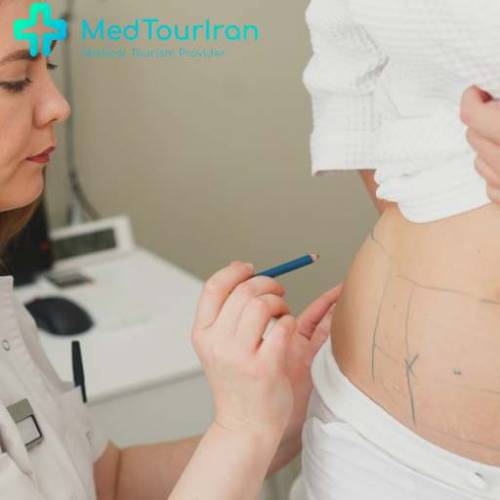

A cataract is a condition of the opacity of the lens of the eye in which the sight becomes clouded, resulting in blurred vision. To understand cataracts, we need to know the manner in which the eye forms an image.
The lens of the eye works like a camera lens. The shape of a normal and lens can be adjusted for the accommodation of objects with different distances. It concentrates the light entering into the eye and forms an image of whatever you are looking at onto the light-sensitive tissue at the back of the eye which is called the retina. The light is then converted into nerve signals by the retina. These signals are sent to the brain via the optic nerve or image processing. A transparent and totally clear lens will produce a sharp image on the retina. When we age, protein strands in the lens may bunch up together and cause clouding of the lens.
Therefore, the formed image is blurred due to the blocking and scattering of the light entered into the lens. As the clumping of the protein increases, new lens cells form on the outside of the lens, which causes the blurry vision. As time goes by, the clouded area grows, which makes normal vision exceedingly problematic.
The following factors cause cataracts by changing the tissue that the lens is made up of. Increased age: the prevalence of cataracts goes up with age. Being female, diabetes, steroids, uveitis, and trauma increase the risk as well. Exposure to UV light, smoking, alcohol, and inherited genetic disorders: the hereditability of cataracts is about 55%. Any other eye condition or eye operation might escalate the chance of cataract condition. 50% of the cases of blindness around the world are caused by aged cataracts. 30% of the people in the UK aged 65 or over have at least one cataract case.
A cataract can be removed through surgery. The methods by which it can be removed is one of the following:
Phacoemulsification cataract surgery: in this type of surgery, before making any incision, local anesthesia is given to the patient for insensitivity to pain. After making incisions that are less than 4 mm on the verge of the cornea, the cataract is first broken into pieces, and then sucked out and removed by a tube. After the removal of the natural lens, an artificial lens is replaced in the cornea. This operation takes about one hour. What makes this procedure very efficient is the fact that after the replacement of the new lens, since they are so microscopic, the incisions that were made for the removal do not have to be closed. The patient can be discharged to go home on the same day.
Extracapsular cataract surgery: in comparison to phacoemulsification method, in this method larger incisions (about 12 mm) are made in the cornea and the recovery takes longer. During the operation, the patient is awake but the eye area is given local anesthesia. The large incisions help the doctor to remove the blurred natural lens more easily and efficiently, but, after the replacement of the artificial lens, the cuts have to be stitched. The stitches do not need to be removed since they will heal themselves after some time.
Femtosecond Bladeless Cataract Surgery: in this procedure, instead of a metallic blade, Femtosecond laser is used for the three critical steps of the surgery. The operation is computer-guided, which makes it faster than the conventional methods. It also eliminates the chance of human error. With regard to precision, this method is the best known for cataract removal.
Your doctor will advise you whether a cataract surgery is required or not.
Dos:
- Resting is recommended immediately after cataract surgery.
- Follow the doctor’s instructions very carefully regarding eye drops to be used.
- Avoid touching and rubbing your eyes or splashing water on them.
- If you see any discharge, you can clean it using a clean tissue only.
- Wear dark glasses or an eye patch as instructed by your doctor.
- Keep the glasses on while you are awake and in bright surroundings until things get back to normal.
- Inform your doctor if itching, excessive discharge, or light sensitivity persists for more than one or two days.
Don’ts:
- Do not bend down for one or two weeks after your cataract operation, because it would inflict pressure on the eye.
- Do not lift heavy weights or do any type of vigorous physical activity for at least three to four weeks after cataract surgery.
- Do not attempt to cook or to stand near open flames or intense heating devices for two weeks or more after cataract surgery if possible.
- Allow your vision two to three days after the cataract operation to readjust and get back to normal. After this amount of time, if you still have inflammation or excessive redness of the eye, or are experiencing double vision or blurred sight, contact your doctor.
- Complete healing after cataract surgery takes four to six weeks.
Phacoemulsification Cataract Surgery in India costs around $1000. Extracapsular Cataract Surgery costs 1200 dollars, bladeless cataract surgery starts from $3000 for each eye and goes up to even $5000. In Turkey, cataract eye surgery package starts at $3000. Cataract removal in Europe will force on your shoulders around $4600.
The treatment of cataracts and any other sort of eye care in Iran is performed in the most equipped eye clinics and by the best and most professional eye specialist doctors in Iran. Medical treatment in Iran has a special place in the Middle East and in the world because of Iran’s skilled ophthalmologists, optometrists, and opticians. All kinds of surgical and medical treatment of eye disorders is done by well trained eye specialists in Iran.
MedTourIran works with the best eye specialist doctors and the best hospitals in Iran. Our packages provide you with the most reasonable cataract surgery cost in Iran and in the world; Plus free consultation, visa, transfer, accommodation, pre- and post-operative care, treatment, and follow-up. MedTourIran cataract surgery offers start from $1200 and we offer cataract treatment in Tehran, Mashhad, and the beautiful city of Shiraz. As one of the best medical tourism companies in Iran, MedTourIran is ready to make your eye care procedure in Iran, one of the most extraordinary experiences of your lifetime. Therefore, if you are looking for the most professional health tourism company in Iran, do not hesitate to contact us!
Read more:

22 Jun 2020

18 Jun 2020

16 Jun 2020

15 Jun 2020

27 May 2020

12 May 2020